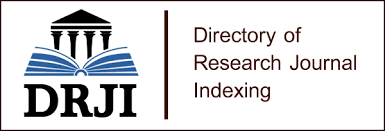THE IMPACT OF CONFLICT IN THE CHURCH: A CASE OF THE ANGLICAN DIOCESE OF MANICALAND IN ZIMBABWE
DOI:
https://doi.org/10.55327/jaash.v9i2.305Abstract
This study critically explored the impact of the conflict on the teaching and learning processes in Anglican schools through the two case studies. The researchers adopted a case study approach and used a qualitative research design. Data was collected using interviews with key informant, focus groups discussion with school development committee members, parents, students. In addition, questionnaires were also administered. The findings confirm that the both students and staff were seriously affected by the conflict and the teaching and learning processes were affected too. What the teachers and students went through during the conflict might have long term effects which the church leaders might not be aware of at the moment. The conflict is said to have been resolved but there was evidence that the institutions still have serious divisions that are hampering progress and development and need urgent attention. The conflict resulted in myriads of problems that affected the teaching and learning processes in the Anglican schools. Teachers, non-teaching staff, and students were affected in different ways. Lessons were disrupted, staff and students were intimidated and victimised. They suffered physical, psychological, cultural and structural violence. The study recommends setting up of Truth and Reconciliation Commission to deal with the damage done by this long-term conflict.
Downloads
Published
How to Cite
Issue
Section
License
Copyright (c) 2023 David Foya, Luke Teddy Chigwanda

This work is licensed under a Creative Commons Attribution 4.0 International License.
Copyrights for articles published in Journal of Asian and African Social Science and Humanities are retained by the authors, with first publication rights granted to the journal. The journal/publisher is not responsible for subsequent uses of the work. It is the author's responsibility to bring an infringement action if so desired by the author.
Articles published in Journal of Asian and African Social Science and Humanities are published under the Creative Commons Attribution (CC-BY) license, which permits others to distribute, remix, tweak, and build upon your work as long as they credit you for the original creation.
Â















